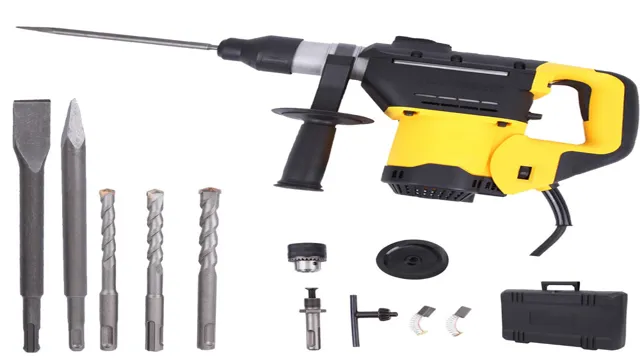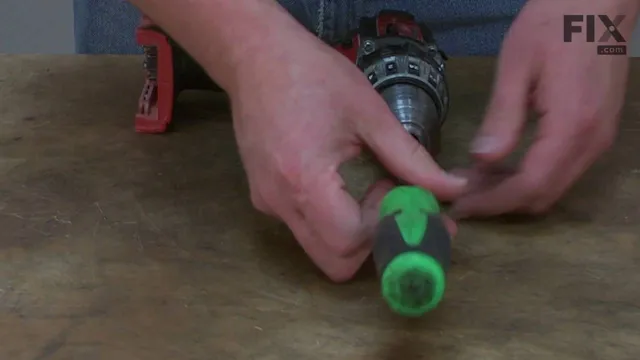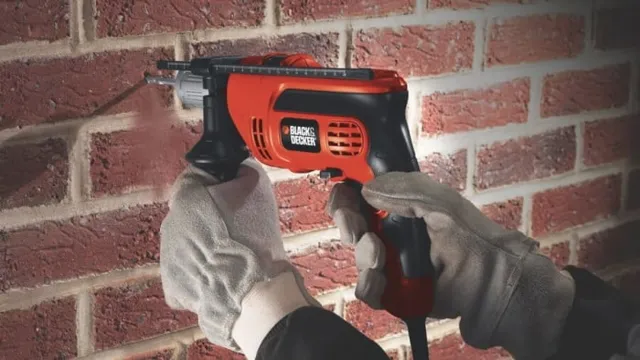Do I Need a Hammer Drill to Drill into Brick? Expert Advice and Tips.
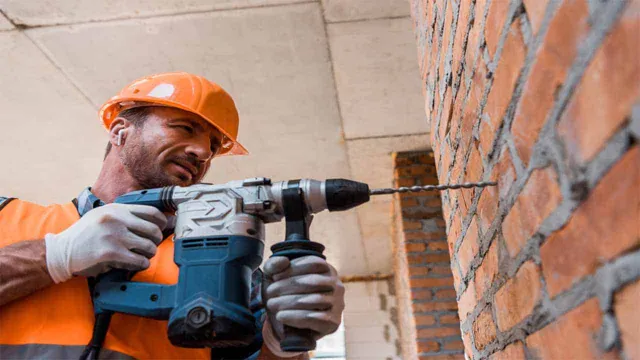
Drilling into brick might seem like a daunting task, but with the right tools and techniques, it can be easily done. Whether you’re looking to mount a shelf, install a new light fixture or attach a garden trellis, drilling into brick can be a necessary step in the process. However, it’s important to know how to do it properly to avoid damaging the brickwork or injuring yourself.
In this blog post, we’ll take you step-by-step through the process of drilling into brick, covering the necessary tools, techniques, and safety precautions to take. After reading this post, you’ll have the confidence and knowledge to tackle your next home improvement project with ease.
What Tools You Need
If you’re planning on drilling into brick, you may be wondering if a hammer drill is necessary. The short answer is yes, it is highly recommended. This is because brick is a dense and hard material, and a regular drill may not be powerful enough to penetrate it effectively.
A hammer drill uses a percussion mechanism to create a hammering action while drilling, which helps to break up the tough surface of the brick and make the drilling process smoother and faster. It’s important to use the appropriate drill bit as well, such as a masonry bit, to ensure a successful and safe drilling experience. So if you want to make sure your project is a success and avoid frustration and potential damage to your drill, it’s best to invest in a hammer drill for drilling into brick.
Hammer Drill vs Regular Drill
When it comes to DIY projects, having the right tools is essential. One of the most important decisions to make is whether to use a hammer drill or a regular drill. Sometimes it can be difficult to understand which tool is right for the job.
A regular drill is perfect for drilling small holes into wood or metal, while a hammer drill is necessary for drilling into concrete or masonry. The extra power and force provided by a hammer drill allows it to effectively drill into harder surfaces, whereas a regular drill simply doesn’t have the power to do so. Ultimately, deciding which drill to use depends on the type of project you’re taking on.
If you’re unsure, it’s always best to check the project specifications or reach out to a professional for guidance.
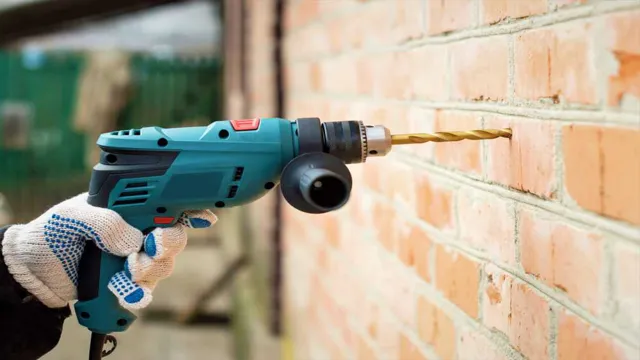
Types of Bits to Use
When it comes to woodworking, using the right type of bit can make all the difference. There are several types of bits available, each designed for specific tasks and materials. To start, you’ll need a set of twist drills to make holes in wood or metal.
Brad point bits are great for precise and accurate holes in wood, while spade bits are ideal for larger holes. For cutting grooves or channels, use a straight bit, and for decorative edges, a round-over bit can do wonders. A rabbeting bit is essential for making rabbet joints, and a dovetail bit is necessary for making dovetail joints.
Finally, if you need to make beveled edges or smooth out rough surfaces, a flush trim bit can be an excellent option. Remember that using the right bit for the job not only produces better results but can also extend the lifespan of your tools.
Preparing to Drill
If you want to drill into brick, you may be wondering if you need a hammer drill. While it’s not absolutely necessary, using a hammer drill can make the job much easier and faster. The reason for this is that brick is a very hard material, and a standard drill may struggle to make a hole in it.
A hammer drill, on the other hand, uses a back-and-forth motion in addition to the rotation, which helps to break up the tough brick surface. This can save you a lot of time and effort, and also ensures that you get a clean, neat hole. Additionally, using a hammer drill will help to reduce the chances of the drill bit slipping or wandering as you drill into the brick.
So, while you don’t need a hammer drill to drill into brick, it’s definitely a useful tool to have on hand!
Clean the Area
When preparing to drill, it’s important to start by cleaning the area thoroughly. This means removing any debris, dirt, or other obstacles that could impede the drilling process and potentially damage your equipment. Additionally, you’ll want to ensure that the area is level and stable, as this will help you achieve precise measurements and avoid any accidents or mishaps.
By taking the time to clean and prepare your drilling site, you can ensure that you have a successful and efficient drilling experience. So, grab your gloves and a broom, and get ready to tidy up before you start drilling!
Mark the Spot
Preparing to drill requires careful planning and execution to ensure safe and effective operation. It starts with selecting the location to drill, which involves a thorough understanding of the geology and terrain of the area. A geological survey is conducted to identify the rock formations and mineral deposits present.
This information is crucial as it helps determine the type of equipment needed and the drilling method to be used. It also plays a vital role in predicting any potential hazards or challenges that may arise during the drilling process. Before drilling commences, the site needs to be prepared by clearing trees and debris, constructing roads, and setting up a secure and stable drilling platform.
Safety is of utmost importance during drilling, and all personnel must be equipped with proper protective gear and trained to operate the equipment safely. With the proper preparation and execution, drilling can lead to exciting discoveries and advances in science and technology.
Wear Safety Gear
When getting ready to drill, it’s critical to ensure you’re wearing the appropriate safety gear. Without the right gear, you’re putting yourself at risk of injury or worse. First and foremost, you’ll want to wear eye protection.
Safety glasses or goggles will protect your eyes from flying debris, which can easily cause damage. In addition to eye protection, you’ll also want to wear a dust mask to prevent inhalation of harmful particles. Gloves will not only protect your hands but also provide better grip, allowing you to maintain control of the drill.
It’s important to choose the right type of gloves for your specific task, as some materials may require more protection than others. Lastly, ensure you’re wearing appropriate footwear, such as work boots with sturdy soles, to avoid slips or falls while drilling. By taking these simple precautions, you’ll be better protected and equipped to tackle your drilling project safely and efficiently.
Drilling into Brick
Are you wondering whether you need a hammer drill to drill into brick? Well, it depends on the type of brick you’re drilling into and how deep you need to go. If you’re drilling into a soft or porous brick, you can get away with using a regular drill and masonry bit. However, if you’re drilling into a hard or dense brick, you’ll need a hammer drill with a masonry bit to get the job done.
A hammer drill is designed to create a rapid up and down motion that allows the bit to penetrate tough materials like brick. Without a hammer function, the regular drill won’t be able to make much progress, and you’ll quickly become frustrated with the slow progress. So, if you’re drilling into tough brick, it’s best to invest in a hammer drill to make the job quicker and easier.
Use Slow and Steady Pressure
Drilling into brick can be a daunting task, but with the right technique and tools, it can be done smoothly and efficiently. One essential factor to keep in mind is to use slow and steady pressure. The key to drilling into brick is to apply enough pressure to penetrate the surface gradually, without forcing the bit and causing damage.
Using too much pressure can cause the bit to slip and ruin the brick, making the hole larger than intended. Applying slow and steady pressure helps to maintain control and accuracy, ensuring a clean and precise hole. Additionally, using a sharp masonry bit and suitable drill can also make the process easier.
Remember, patience and control are vital when drilling into brick, so take your time, and remember to use slow and steady pressure to achieve the best results.
Drill in Short Bursts
If you’re looking to drill into brick, it’s important to keep in mind that it can be a bit of a challenging task. One of the best tips is to drill in short bursts rather than trying to power through the whole thing at once. This helps avoid overheating the drill and can prevent damage to both the drill bit and the brick.
Another thing to keep in mind is the type of drill bit you use. For brick, you want to use a masonry bit that is specifically designed for harder materials. You’ll also want to keep a firm grip on the drill and apply steady pressure as you work your way through the brick.
Additionally, it can be helpful to mark the spot you want to drill with a small indentation or crossed lines to ensure accuracy. Remember, drilling into brick requires patience and precision, so take your time and don’t rush the process.
Conclusion
In summary, the answer to the question “Do I need a hammer drill to drill into brick?” is a resounding yes. Trying to drill into brick without a hammer drill is like trying to eat soup with a fork – it might work, but it will be much more difficult and time-consuming than using the proper tool. So, grab that hammer drill and get to work, because drilling into brick has never been easier!”
FAQs
Can I use a regular drill to drill into brick?
It is not recommended to use a regular drill for drilling into brick as it may not be powerful enough to penetrate the brick.
What is the difference between a regular drill and a hammer drill?
A hammer drill has a hammering action that helps to break through hard materials like masonry and concrete, while a regular drill does not.
Can a hammer drill be used for other materials besides brick?
Yes, a hammer drill can be used for drilling into materials such as concrete, stone, and masonry.
What size of hammer drill bit should I use for brick?
It is recommended to use a 5/32 inch or 3/16 inch drill bit for drilling into brick with a hammer drill.
Do I need a special drill bit for brick?
Yes, it is recommended to use a masonry drill bit that is designed for drilling into materials such as brick and concrete.
What safety precautions should I take when drilling into brick?
It is important to wear safety goggles and a dust mask to protect yourself from flying debris and dust. You should also secure the brick in place to prevent it from shifting or moving while drilling.
What is the best technique for drilling into brick with a hammer drill?
It is recommended to start with a slow speed and light pressure to create a pilot hole, then gradually increase the speed and pressure for larger holes. Always keep the hammer drill perpendicular to the brick surface to prevent the bit from slipping.

